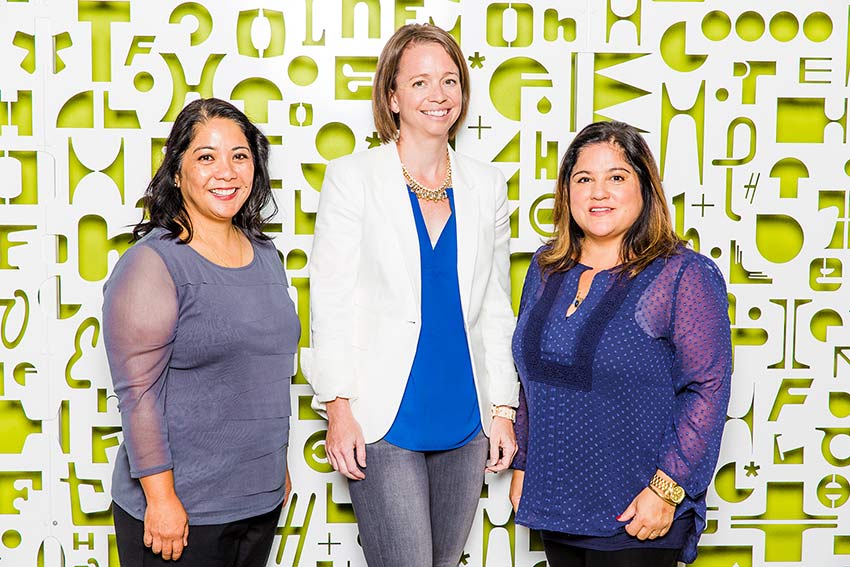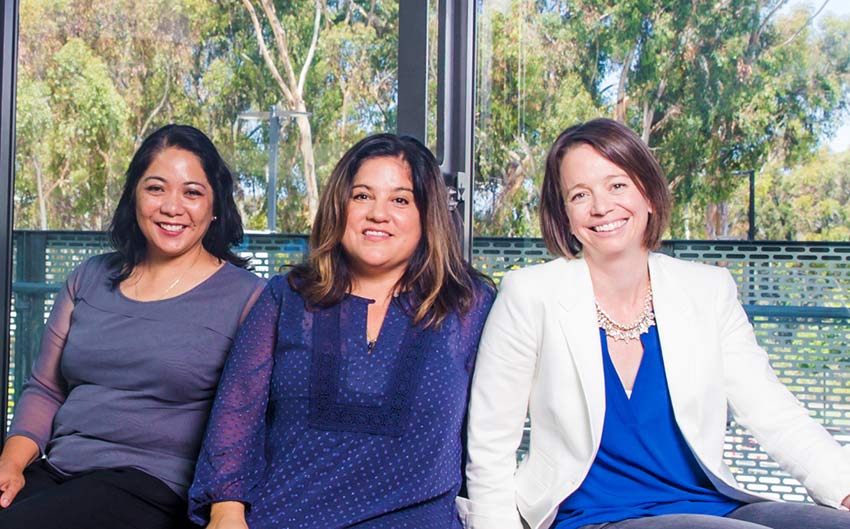By Andrea Siedsma

As a computer programmer for more than two decades, Tina Mata has learned that technology doesn’t solve every problem. In fact, many times, inefficiencies in the workplace can be improved the “old fashioned” way — through problem solving; identifying and removing unnecessary processes; and working as a team to effect change.
Mata was part of a team that did just that during the Lean Six Sigma Green Belt program offered through UC San Diego Extension. Lean Six Sigma is a set of tools, techniques, and operating principles that represents the best of practices in quality and process improvement, resulting in improved performance and reduced costs. The Green Belt, a new addition to Extension’s Lean Six Sigma program, requires students to locate $40,000 in projected annual savings via their projects.
Through the program, students earn various colors of belts, which indicate their levels of mastery of expertise. A person who has earned the designation of Lean Six Sigma Green Belt often plays a key role in the success of an organization’s process improvement initiatives. After earning their green belts, students can move on to the Lean Six Sigma Black Belt certificate program, which includes a projected $100,000 in annual savings for each project.
Mata and her teammates won Best in Class for the Spring 2016 Lean Six Sigma Green Belt project presentations. The project focused on improving the turnaround time for invoices that flow through UC San Diego’s Marketplace, the portal the university uses to purchase goods and services. The project significantly cut down the average time to process an invoice.
Mata, a programmer analyst at ITS/Housing Dining Hospitality at UC San Diego, said the project opened her eyes to a world sans technology.
“Some people say, ‘Let’s just automate it.’ But they don’t look at the overall process—what is happening to the data and information,” she said. “Six Sigma forces you to look at the process instead of saying, ‘We’re going to buy this piece of software and it will be better.’”
The team’s Invoice Cycle Time project examined UC San Diego’s ability to offer expedited payment terms. Currently, invoice payment terms for paper invoices defaults to net 30 days in order to allow enough time for processing. When the project started, the estimated processing time was 1 to 20 days. The goal of the project was to shorten the processing time to less than 10 days in order to offer shorter payment terms.
Here are some of the results from the team’s winning project:
- Significantly shortened invoice processing time by eliminating unnecessary or redundant steps
- Improved visibility of defects in the invoice process
- Used data to dispel bias
- Improved the client experience and relationships with vendors by accelerating the invoice cycle time to ensure UC San Diego’s commitment to consistently pay on time
Mata was one of seven students who received scholarships for the Lean Six Sigma Green Belt program for 2015–2016. She plans to apply for another scholarship to earn her Lean Six Sigma Black Belt. UC San Diego significantly increased the scholarship program for fiscal year 2016–2017 in hopes of attracting more university staff to take part in the program to help implement efficiencies across the campus.
“I am so grateful to take this class,” Mata said. “It has opened my eyes to ask questions that I wouldn’t have asked before, and I have a better understanding of what my end customers want to do. It will play a significant role in my career.”
Process of Elimination
Ana Portlock, the team’s project leader, will also carry the Lean Six Sigma mantra into her everyday work life. She said while the university has transitioned to electronic invoicing, some suppliers have not yet made the switch and are still sending in paper invoices, which can create a backlog.
“There is still a lot of ground to cover,” said Portlock, a senior business analyst serving as a project lead on the Integrated Procedure-to-Pay Solutions (IPPS) Technology and Project Management Team at UC San Diego. “Even if we automated invoices, we still have to make sure that flow isn’t causing a backlog. We want things to keep moving. That’s what the whole Six Sigma program is about: to make sure things are flowing and continuously moving through the system. We are still looking at ways to improve to make sure we are not wasting time and resources on things that we can do better.”
She said the most impactful part of the project was empowering staffers to examine their own processes and brainstorm improvements. This yielded some of the best results.
“Eliminating one person’s step in the whole process was a small but significant change,” Portlock said. “There was a time when this step, which was to count and log batches of invoices, was necessary based on the volume of invoices and the need to track them. Paper invoices have since decreased, and the step was no longer necessary. This is just one example of a step that was removed from the process to save time and keep the invoices flowing.
“This class and project were eye opening for me,” she added. “Most companies make assumptions that if you automated processes, all problems go away. That’s not true.”
Improving Vendor Relations
Reducing the invoice-to-payment time has not only made Sarah Barron’s job a little easier, it has improved her department’s relationship with vendors.
“Improving our payment terms with the Lean Six Sigma program will help us negotiate more favorable contracts with vendors in the future,” said Barron, director of fiscal affairs in the business office for the UC San Diego Department of Medicine and a key member of the Invoice Cycle Time project team. “If we don’t have a good reputation with the vendors in the community, they won’t want to work with us.”
For example, she said, her department runs a large number of events annually with individual event coordinators working with various vendors. A lot of time was spent tracking down invoices and payments, coordinating communications, and going back and forth.
“Lean Six Sigma opened my eyes to how we can be more efficient; it changes your mind-set of how you can improve processes and free up extra time,” Barron said.
The team had about a month and a half to collect data and to implement its changes.
“It was pretty intense,” said Barron, who also received a scholarship for the Lean Six Sigma Green Belt program. “It was stressful because of the condensed timeframe to implement an improvement, and we had to show that it worked. But it forced us to tackle any issues head-on. It was hard to take that time from your day-to-day tasks, but I know learning those skills will improve my outlook and my ability to create positive change for years moving forward. While the time commitment in the short term is hard, it has long-term benefits.”

Pay It Forward
Besides helping to create efficiencies within the university, UC San Diego Extension’s Lean Six Sigma program is also open to organizations and companies throughout San Diego County. Past students have come from organizations and companies such as Northrop Grumman, Qualcomm and even the City of San Diego. After all, who doesn’t want more efficiency in their processes?
“To come into a program that guarantees that you will see at least $100,000 in annual savings (for the Black Belt certificate) is very appealing to a lot of different organizations,” said Hugo Villar, director of business, science and technology at UC San Diego, noting that the average annual savings for the Lean Six Sigma program is actually $250,000 for most projects. “To be able to achieve that in only 14 weeks is pretty amazing.”
“We teach students how to work effectively as a team and to take that knowledge back into their work environment and get the buy-in from everybody around them to implement these plans,” he added. “It fuels collaboration and connectivity with others.”
More information on UC San Diego Extension’s Lean Six Sigma Green Belt Program can be found here.